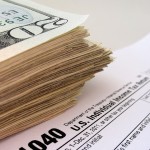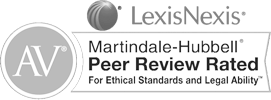
Photo courtesy of http://401kcalculator.org
With tax season quietly approaching, it’s time to think about how to maximize your returns. What if a few thousand dollars suddenly hit your bank account? What would you do with that money?
That will be a reality for many Americans this tax season as, according to a recent survey by Straight Talk Wireless, Americans on average expect to receive around $2,000 back on their tax refund this year. Use this time to reap your maximum refund rewards.
In the survey, 90 percent of respondents said tax season is a good time to think about how to save money in other areas — with 84 percent thinking a tax refund is a good way to jumpstart healthy financial habits. Follow these eight tips to help make your refund go further:
- Don’t think of your tax refund as “fun” money. Sixty-eight percent of Americans said it’s easy to accidentally spend “fun” money on items they don’t really need, but by taking a step back and thinking long term you can make savings choices to help your refund stretch all year long.
- Be a saver. When it comes to tax refunds, Americans are split: 52 percent think you should spend it and 48 percent think refunds should be tucked away in savings. Good financial habits start with saving. Which side will you be on this year?
- Resist the urge to splurge. Just nine percent of Americans filing taxes this year said they’re likely to use their tax refund to splurge on a big-ticket item. Instead, consider using tax refunds to establish good financial habits, such as cutting unnecessary bills. Make a list of monthly expenses and take time to reevaluate your spending on things like food, utilities or your monthly cell phone bill. You’re almost guaranteed to find ways to cut back and reduce costs.
- Start Immediately. Procrastination is just going to make things worse. Pressure will increase as tax-filing day draws nearer and it’s more likely that you will have problems finding vital paperwork or will make mistakes filling out your form. Get started on your taxes as early as you can and gather some positive momentum.
- Organize Your Paperwork. Hopefully you have been storing and organizing important tax documents and necessary receipts throughout the year — but if so, you probably would not be reading an article about how to prepare for tax day. Start by gathering the basic tax documents. Last year’s tax return, W-2 forms, 1099-MISC forms for any independent contracting work, other 1099s forms for things like bank accounts and brokerage statements, and 1095 forms to prove health insurance status. After securing all the basic documents, move on to receipts for all itemized deductions. Speaking of deductions …
- Explore Deductions. You may not even realize how many itemized tax deductions that you have and simply assume the standard deduction is the best choice. Review the instructions for Schedule A and IRS Publication 529, “Miscellaneous Deductions” to see all the options available to you. Do not forget about “above-the-line” deductions like educator expenses and health savings account (HSA) deductions. You can take those deductions whether you itemize or not.
- Max Out Your Retirement Contributions. Even though it is now 2016, you can still make contributions to your IRA until the tax-filing deadline in April and credit those contributions to your 2015 taxes — as long as your contributions for the year stay within the $5,500 limit ($6,500 if you are over 50 years old). Schedule your retirement contributions in a way that brings you the greatest tax advantage.
- Seek Professional Assistance. Complex tax situations are best left to the professionals. You may be able to do your own taxes adequately, but a competent tax professional may be able to find you enough refunds to pay for their services and then some — and even if they cannot, you can enjoy greater peace of mind by not having to struggle through the tax forms yourself.
For more information on taxes and investment advice, contact the business attorneys at Resnick Law by clicking here or calling 248.642.5400.



